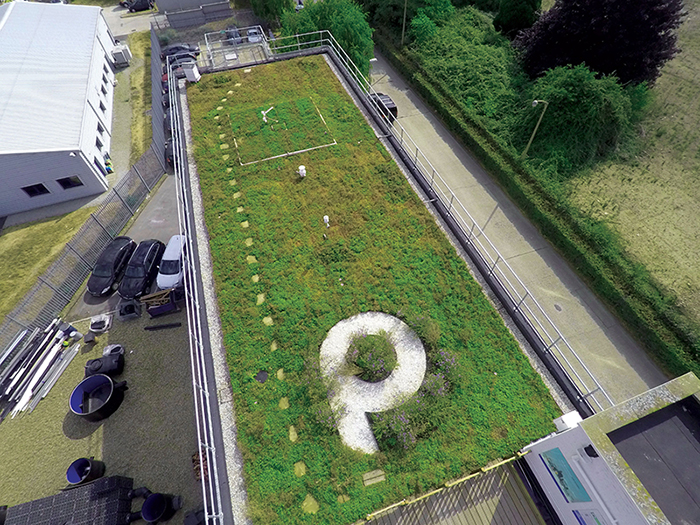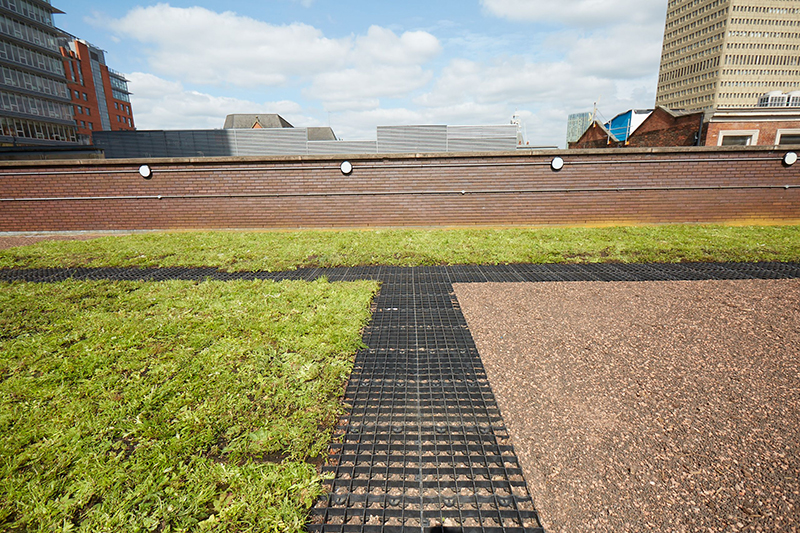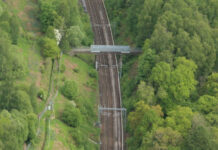
By Graeme Arnott, civils and utlities manager (Scotland), PDM
ANYONE in construction will be aware of the importance of integrating SuDS solutions into any new project.
The recent move to make it mandatory in England brought our peers south of the border in line with already established Scottish (and Welsh) legislation, and this consistency across Great Britain should be welcomed for the heightened awareness and drive towards further innovation that it will bring.
SuDS manages surface water runoff in a sustainable way, replicating the natural drainage process as closely as possible. In doing so, it reduces the flood risk by managing runoff close to its source before releasing it gradually.
At PDM, drainage and SuDS solutions account for a significant proportion of the products we supply to customers. However, whilst this is the case, a huge opportunity exists for the Scottish construction sector to embrace an even wider range of SuDS solutions than they currently employ.
Of course, there are certain nuances in the Scottish construction market compared to other areas of the UK, not least of all within building regulations, but with an increase in inner city urban regeneration, as well a shift to greater levels of retrofitting as a sustainable alternative to building from the ground up, now is a great time to consider a wider range of truly sustainable SuDS solutions.
Believe me, this is about so much more than just ponds and tanks!
Indeed, with an increased focus on the impact that climate change has on our regular weather patterns, often leading to greater extremes, and a shift towards more natural and sustainable water management options, the Scottish construction industry must start considering some of the following when they’re designing new projects or working on the often sensitive area of retrofitting existing buildings which can be laden with heritage considerations.
The following is just the tip of the iceberg; a mere snapshot of the solutions that could be integrated into your next project.
Engineered tree pits
Aesthetically, who can argue against the benefits of trees? The full list of benefits, however, extends far beyond just ‘they look nice’. In short, 70% of rainfall is managed by the trees that it falls on and we should, therefore, look to retain as many of our existing trees as possible.
Planting new trees, however, also mitigates the negative impact of our increasingly frequent storm events and so effectively managing the integration of new trees into any development or regeneration is vital to its lasting impact.
In urban environments, integrating new trees using engineered tree pits such as the TreeBunker from Greenfix, not only increases canopy cover, but also adds meaningfully to stormwater management, with as much as 20% of stormwater run off being managed within the soil volume.

Blue-Green roofs
Whilst it’s easy to focus attention at ground level, the roofs of both new and existing buildings can prove vital in an overall SuDS approach. Polypipe’s Blue-Green roof system, for example, can be installed to provide areas of living vegetation at roof level and by providing source control for water, which would otherwise run-off to downstream attenuation systems or sewers, rainwater can be captured, treated and stored for later irrigation use to vegetation areas.

Indeed, there are numerous benefits of such a solution beyond simply surface water management. Amongst those, are placemaking in the creation of green spaces in otherwise urban areas, the potential for urban farming and increased biodiversity – all of which can have a positive effect for those who see or utilise these areas, and those who own the asset on which they’re installed given the likely value uplift they deliver.
Porous paving systems
In urban areas, the ability for pavements to contribute to the management of stormwater run off should not be overlooked and can prove invaluable in an overall SuDS design when applied in conjunction with the necessary geotextiles and impermeable lining systems.
Recycled plastic pavers infilled with soil and seed for a grassed aesthetic finish, or decorative gravels, are the ultimate porous paving systems and flow rates through recycled plastic pavers such as Greenfix’s Park Pave range far exceed traditional porous paving surfacing materials.

Significantly, these plastic pavers are available in a range of depths to suit site specific loading requirements from simple footpath applications through to HGV-intensive traffic areas.
Erratic and extreme weather conditions are likely to remain a feature of our climate for the foreseeable future and sustainable construction is, thankfully, an increasingly important priority throughout the industry. Let’s make sure these two combine to deliver a greater adoption of a wider range of SuDS solutions.











